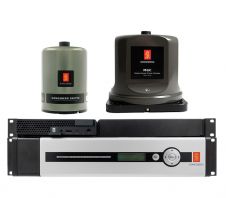Standards in Offshore Survey
The offshore industry has a range of standards in common use. As survey contractors/subcontractors, how far should we aim for standardisation in the work we do and how much scope should we leave for differentiation between ourselves?
In common with most industries, the offshore survey industry has its fair share of standards that are defined by clients, standards bodies, trade associations and legislative bodies, to name but a few. These can relate to data exchange, work practice, quality management systems or health and safety matters.
Good standards can be beneficial; they may improve safety and quality of work, reduce unnecessary costs and provide a level of interoperability enhancing overall project efficiency. A number of new standards initiatives are currently under consideration for implementation. Examples include digital video data and multibeam bathymetry logging.
The proposal to introduce standards for these technologies makes one consider when and why it is appropriate to introduce standards, or whether we have just become accustomed to them and whenever faced with a new problem or technology automatically look for a standardisation tool to solve it.
Should we really try to introduce a standard when a technology is in the early days of introduction, as in the case of digital video? Although this technology might be seen as mature in certain areas, it is relatively new to the offshore industry and is positioned to replace a simple and proven technology that has been the ‘industry standard’ for twenty years. Many clients are not yet even aware of the full potential of digital video, never mind having experience of using it.
Or should we introduce a standard when a technology has a fairly good track record but in acquiring this has moved forward without any common interchange formats, such as is the case with multibeam data logging? Bearing in mind the highly competitive nature of offshore survey and the years of operational experience in developing systems to overcome problems experienced in the field, is there merit in making such proprietary information available in the public domain? Is there a genuine need for exchange of logged data for re-processing or is it a QC problem?
The introduction of some recent standards or guidelines has been beneficial. The IMCA Multibeam Guidelines were produced to address a problem for offshore engineering survey involving an inappropriate standard being specified for work, namely the IHO SP44. Engineering application use of multibeam is much more demanding in deeper water than this document required and therefore guidance for a more appropriate specification was seen as necessary.
A few years ago there was a proposal to adopt or develop a common standard for acoustic transponders. Speaking as a survey contractor, it could be useful if every type of transponder worked with every type of acoustic positioning system. However, the manufacturers of these systems have argued that setting a standard like this would reduce their ability to differentiate between products and bring out innovative solutions to new problems, so the initiative failed - quite rightly, in my opinion.
So should we abandon the use of standards completely? Of course not; they can and do have their place. But let’s be a bit more pragmatic in deciding when to have them or not and leave some scope for differentiation in the market place. The present situation seems to be like the old adage - "when you’ve got a new hammer, everything’s a nail". So next time someone thinks about a new standard, get them to look in their toolkit to see what other tools they have.
The views expressed in this article are those of the author alone and do not represent views or policies of Fugro or Fugro-UDI.

Value staying current with hydrography?
Stay on the map with our expertly curated newsletters.
We provide educational insights, industry updates, and inspiring stories from the world of hydrography to help you learn, grow, and navigate your field with confidence. Don't miss out - subscribe today and ensure you're always informed, educated, and inspired by the latest in hydrographic technology and research.
Choose your newsletter(s)
























